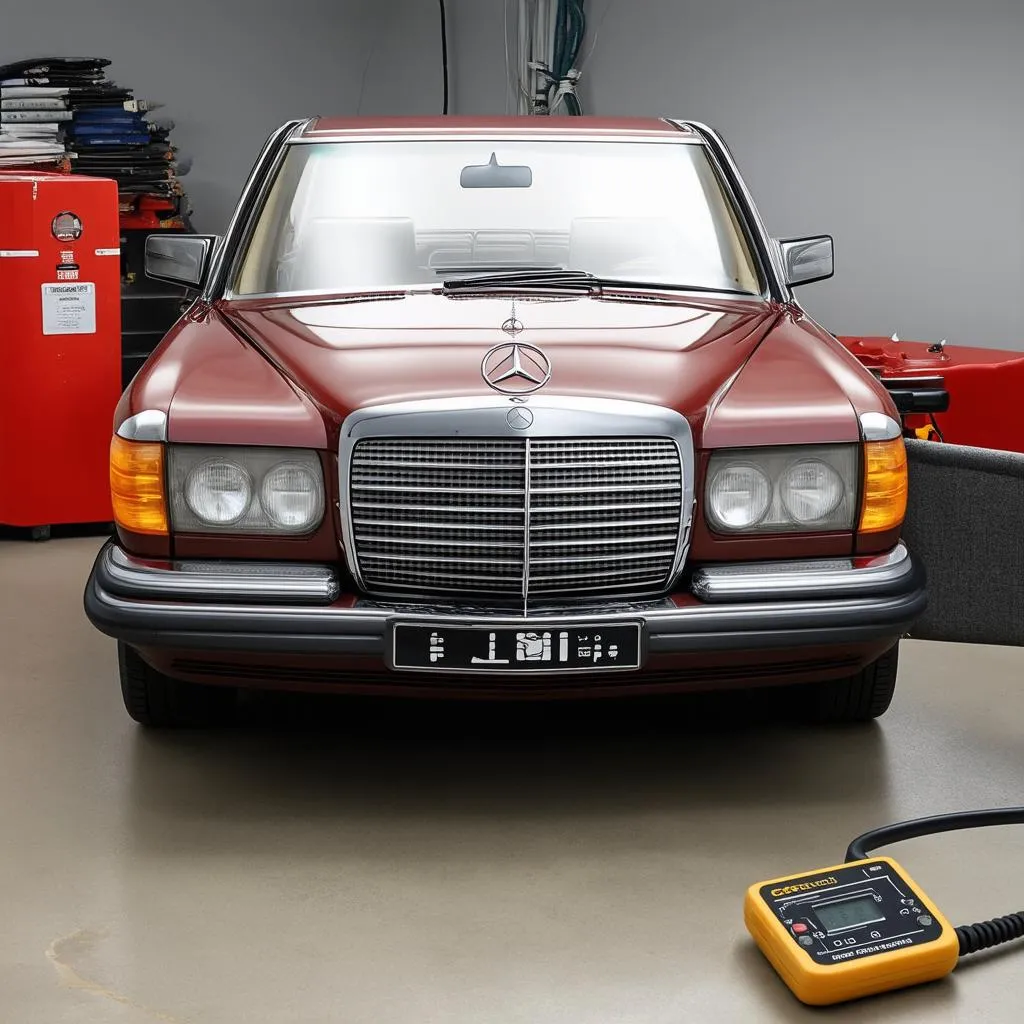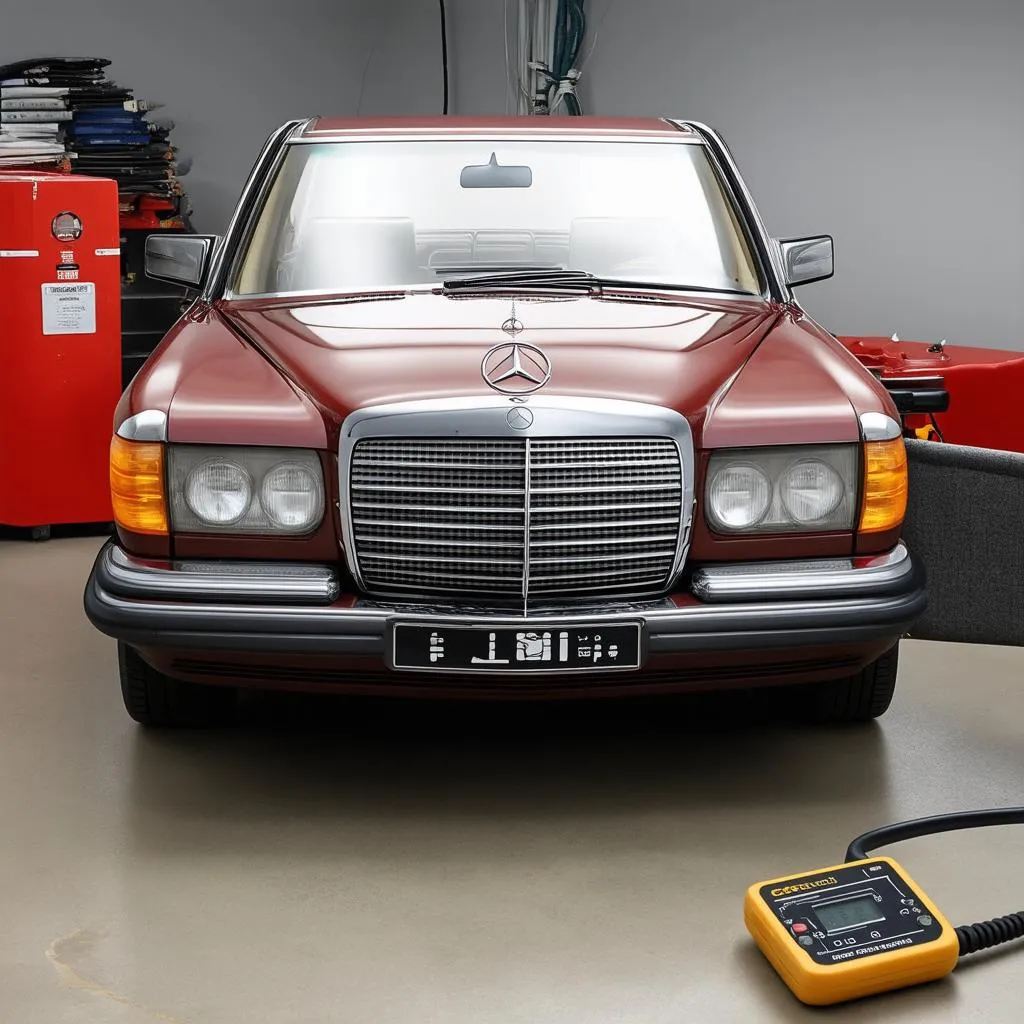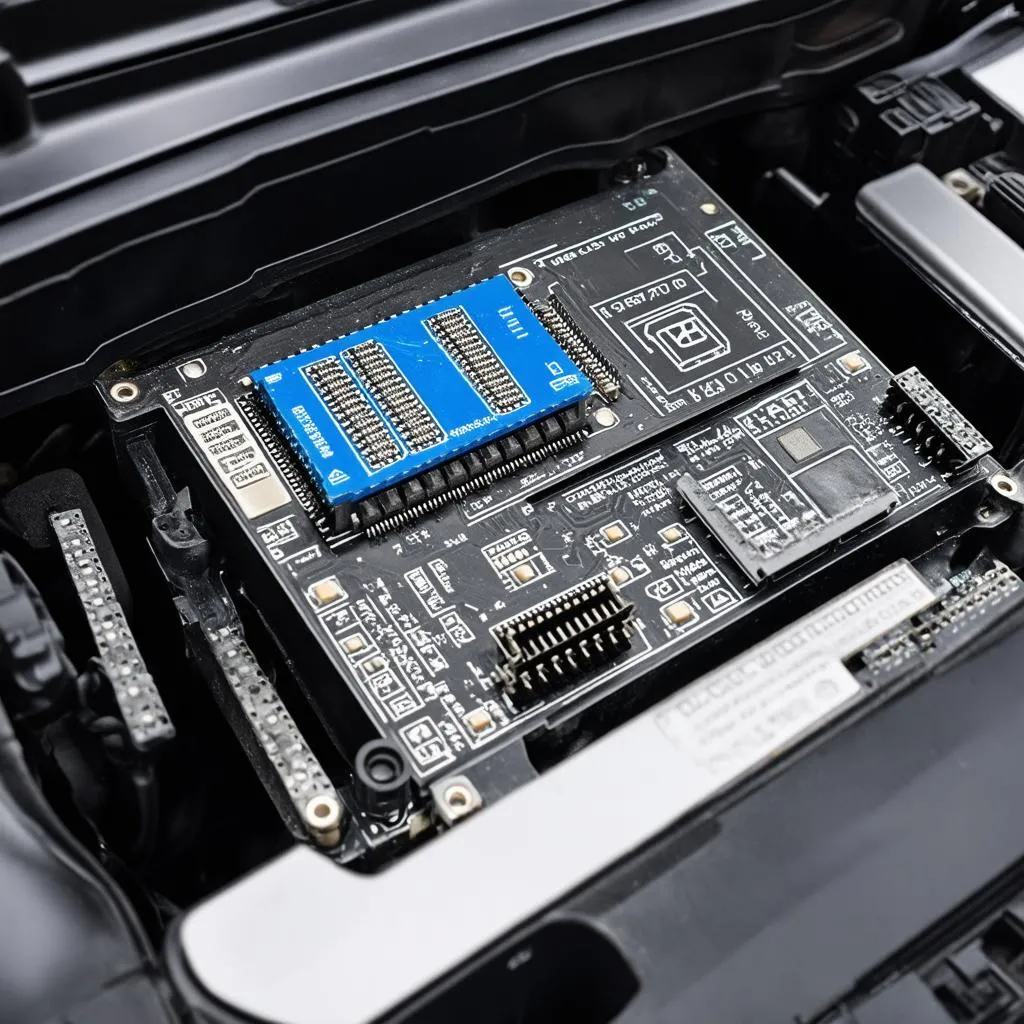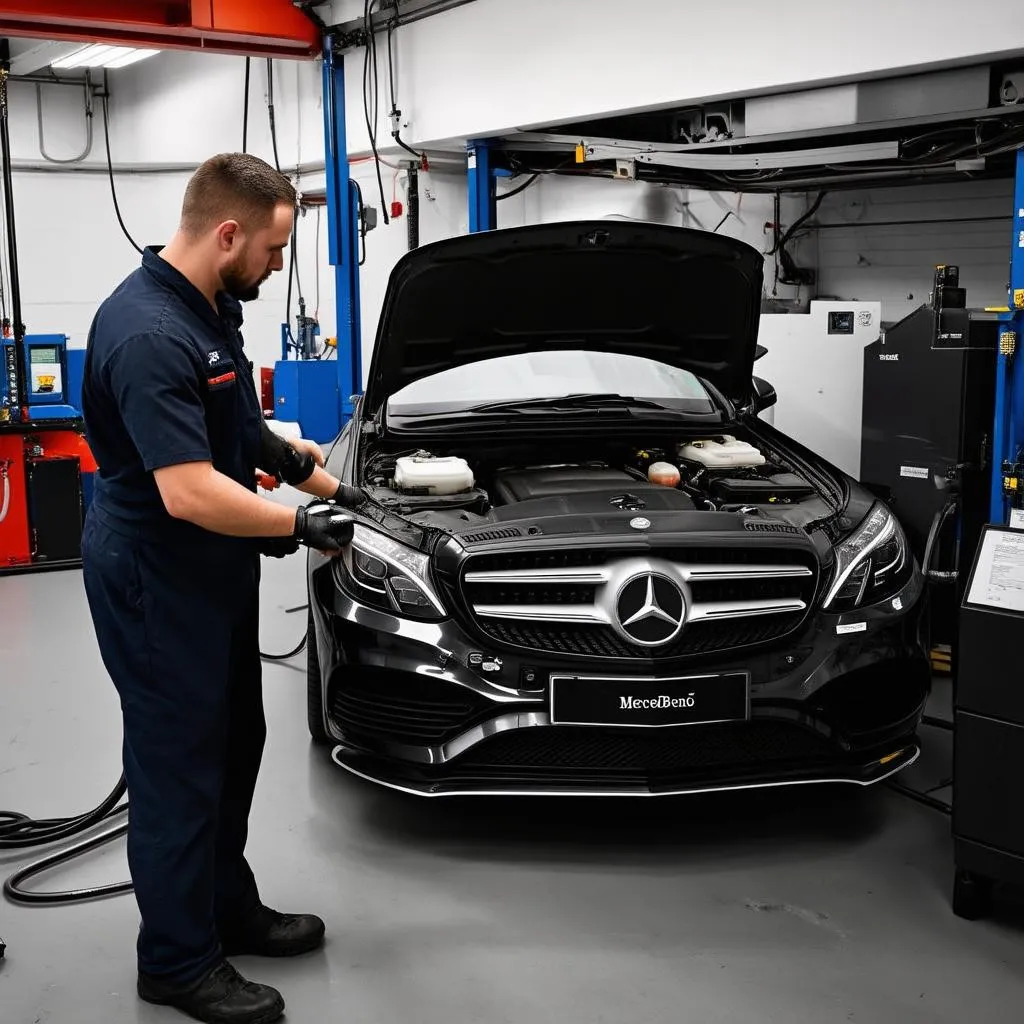Owning a classic Mercedes Benz from the late 80s to mid 90s is a point of pride for many. These cars are renowned for their build quality and driving experience. However, like any aging machine, they can present their share of electrical and electronic gremlins. If you’re a DIY mechanic tackling repairs on your prized Benz, having the right diagnostic tool can mean the difference between a quick fix and days of head-scratching. This article delves into the world of Mercedes Benz diagnostic code reader tools specifically designed for models manufactured between 1987 and 1995.
Understanding the Need for Specialized Tools
Before we dive into the specifics, let’s understand why you can’t just hook up any generic OBD-II scanner to your vintage Mercedes. Cars manufactured before 1996 didn’t use the standardized OBD-II protocol that’s commonplace today. Instead, Mercedes Benz utilized various proprietary systems during this era. For models within the 1987-1995 range, you’ll likely encounter systems like:
- HFM-SFI (Hot Film Air Mass Meter – Sequential Fuel Injection): Commonly found on M103 and M104 engines, this system relies on a specialized diagnostic connector and specific code reading procedures.
- KE-Jetronic (Continuous Injection System): Used primarily in earlier models of this period (e.g., W201, W124), this system requires specialized tools for tasks like reading fault codes from the EZL (ignition control module).
- Early Electronic Transmissions: Early electronic transmissions, like the 722.3 and 722.4, have their own diagnostic connectors and code protocols.
Using the wrong tool can lead to inaccurate readings or even potential damage to your car’s sensitive electronics.
What to Look for in a Diagnostic Code Reader
Given the unique requirements of these classic Mercedes systems, here’s what to prioritize when choosing a diagnostic tool:
- Model and System Compatibility: This is paramount. Ensure the tool explicitly states its compatibility with your specific Mercedes model year and the electronic systems it uses.
- Functionality: At a minimum, the tool should allow you to:
- Read and clear fault codes from the engine control unit (ECU), transmission control unit (TCU), and other modules.
- View live data streams from various sensors. This is crucial for real-time monitoring and troubleshooting.
- Perform component activations (like fuel pump tests, injector tests) for pinpoint diagnostics.
- Ease of Use: A user-friendly interface, clear instructions, and logical menu structures make all the difference.
Popular Choices for Mercedes Benz Diagnostic Tools (1987-1995)
While many options exist, these are commonly recommended by enthusiasts and professionals alike:
- Mercedes-Specific Scanners: These tools are designed specifically for Mercedes vehicles, offering comprehensive coverage for a wide range of models and systems from this era.
- High-End Multi-Brand Scanners: Professional-grade scanners like those from Snap-on, Launch, or Autel often have modules or software updates that support these older Mercedes systems.
- DIY-Friendly Adapters with Software: Several adapters on the market connect your car’s diagnostic port to a laptop or mobile device. Software, often available online, then allows you to interface with your car’s systems.
 diagnostic tool
diagnostic tool
FAQs
Here are answers to some frequently asked questions:
Q: Can I use a generic OBD-II scanner on my 1990 Mercedes 300E?
A: No, generic OBD-II scanners won’t work. Your 300E likely uses the HFM-SFI system, requiring a compatible Mercedes-specific tool.
Q: Where can I find a reliable diagnostic tool for my 1994 E320 with an early electronic transmission?
A: Look for tools that explicitly mention compatibility with the 722.3 or 722.4 transmissions. Specialist Mercedes forums or online retailers often have recommendations.
Q: I’m getting a “Check Engine” light, but my scanner isn’t showing any codes. What could be wrong?
A: This could indicate a problem with the diagnostic connector itself, a faulty ECU, or issues with the wiring harness. Consulting a specialized Mercedes mechanic might be necessary.
Cardiagtech: Your Partner in Classic Mercedes Diagnostics
Navigating the world of diagnostic tools for vintage Mercedes can feel daunting. If you’re unsure about which tool is right for your needs, don’t hesitate to reach out to the experts at CARDIAGTECH. We offer a range of high-quality diagnostic solutions tailored for various Mercedes models and systems.
 cardiagtech
cardiagtech
Conclusion
Having the right diagnostic code reader tool is essential for anyone looking to keep their classic Mercedes Benz (1987-1995) running smoothly. Remember to prioritize compatibility, functionality, and ease of use when making your choice. By understanding the unique diagnostic requirements of these vehicles and investing in the proper equipment, you can confidently tackle repairs and keep your cherished Mercedes on the road for years to come.



